Chilli Plant Care
So you have your chilli plants - what next ? When they arrive in via the post they may be a little dehydrated, and a bit shaken about.
Unpacking the packet - stop! Read this...
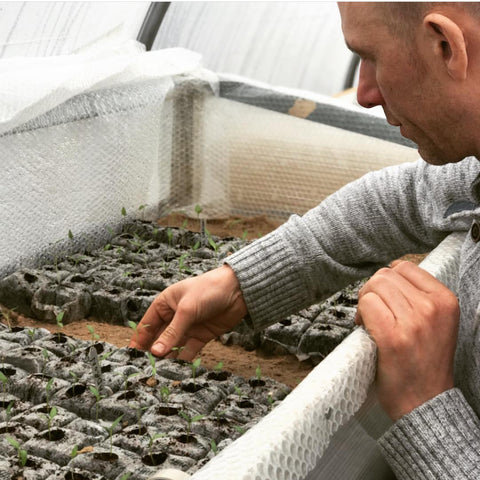
Before you water your new plants, make sure to use water that has been allowed to stand for at least a day. This is to allow the chlorine and chloramine to evaporate off. Alternatively you can use some Neutralise from EcoThrive which is vitamin c that when added to fresh tap water will neutralise the chlorine and chloramine immediately. This is essential for keeping the microbial activity alive in your soil. Chlorine is really bad for the soil , killing off all the beneficial bacteria and microbes that help plants break down the nutrients in the soil.

Another tip - We will label the plants individually, be sure to check which are which when you open the box!
Potting On
Place your chilli plug plants into 9cm pots with fresh soil and water generously. Usually we add about two handfuls of soil to the pot then pop the plug plant straight in and top up the soil around it, gently pressing down to secure the plant in place.
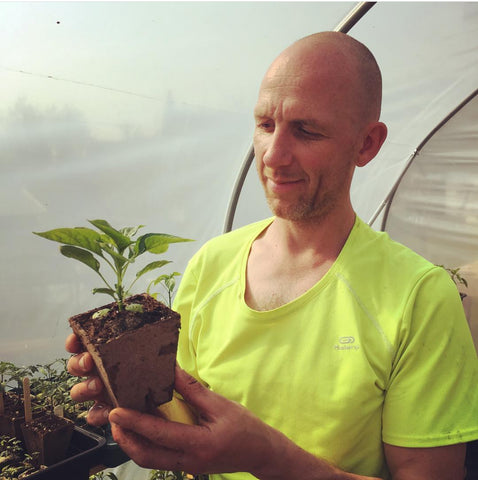
Usually you want to pot on from the 9cm pots when the roots are coming through the pot walls (Jiffy pots) or drainage holes (plastic/ceramic pots)
If you have ordered young plants ( already in 9cm biodegradable fibre pots ) and the roots are already showing, simply place the whole pot straight into your grow-bag or a large pot, and water. We like to use 10 or 15 litre Rhizo Pots which are good for the roots, stimulating growth and increasing water and nutrient uptake. Fabric pots prevent root circling by allowing 'air pruning' - the pot fabric is breathable which allows for better drainage and aeration of the rootzone. The pots can be washed and reused several times and of course, they're not plastic - they are made from recycled materials are biodegradable, so better all round for you, your plants, and the planet.
Of course if you've already got plastic pots, wash them, and reuse them!
Location, location, location..
Stand your plants in a nice warm sunny spot either in the greenhouse, conservatory, orangery or sunny windowsill.
The plant may be a bit droopy to start with but after a few hours it should pick up and recover from the journey.
You can grow chillies outside in summer, but they won't really perform as well as they might and you know British weather sometimes summer just doesn't happen :)
We recommend covering the plants at night if the temperature is set to drop below 5, to protect from frost, even if they are inside. Chilli plants like to be warm and dry ( who doesn't ! ) so keep them as warm and ventilated as you can, avoiding cold drafts ( e.g. next to the greenhouse door ).
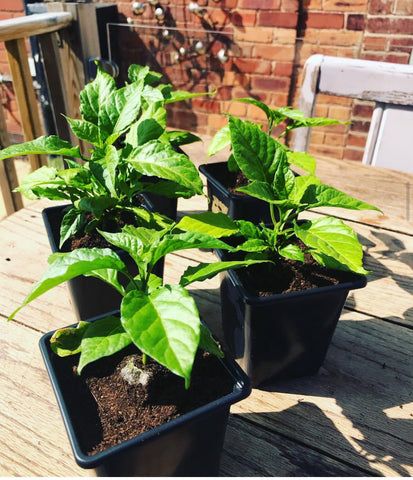
Watering your Chilli Plants
Don't forget - let your water stand for a day or neutralise it before watering - those all important soil microbes will thrive and then so will your plants.
Watering any plant doesn't have to be a guessing game or a reaction to the plants appearance. Just push a lollipop stick or finger into the soil about 1-2cm and see if it's damp under the surface. If not, water. On hot days obviously your plant will drink more, if it starts to droop don't panic! Just water thoroughly and in an hour it'll be fine. Don't leave them to droop before watering though!
We water early in the day and then check later to see if they need more. Too much water is just as damaging as not enough so take care to monitor your plants need carefully.
Feeding
Once your plant starts to flower you should feed the plant with a seaweed based feed, like Flourish from Ecothrive . It can be used every watering, its 100% organic and contains everything your plants need to thrive.
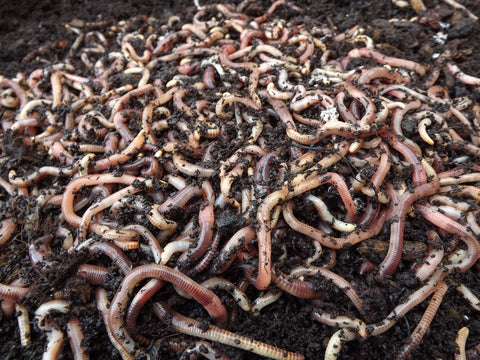
Add some worms to your soil to add your own little team of composters, they improve the condition of the growing medium by creating tunnels and paths through the soil which helps to aerate and distribute nutrients through the different layers. This helps to stop your soil from getting overly compacted. You can buy fresh worms from our friends at Yorkshire Worms.
Pollenation
Chilli plants pollenate themselves via insects and movement of the plant in the breeze, so if you are growing in the house where there may not be insects flying around it's helpful to give the plant a gentle shake when flowering to help pollenate it.
As the fruits grow they'll change in size, shape and colour, depending on the variety, eventually ripening for you to pick and enjoy. Stake your plant with a cane or similar if it is a heavy cropping type to prevent damage from overloaded branches.
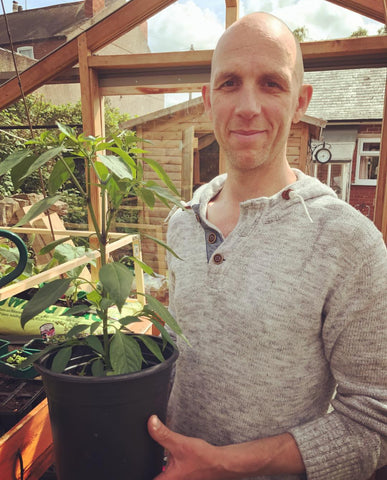
Harvesting
With some varieties like Jalapēno, Padron and Hot Wax, picking ripening fruit will encourage more fruits to follow. Super-hot varieties and generally hot chillies like Scorpions, Reapers etc will take longer to ripen so will stay on the plant for the whole summer, usually harvesting in late August / September.